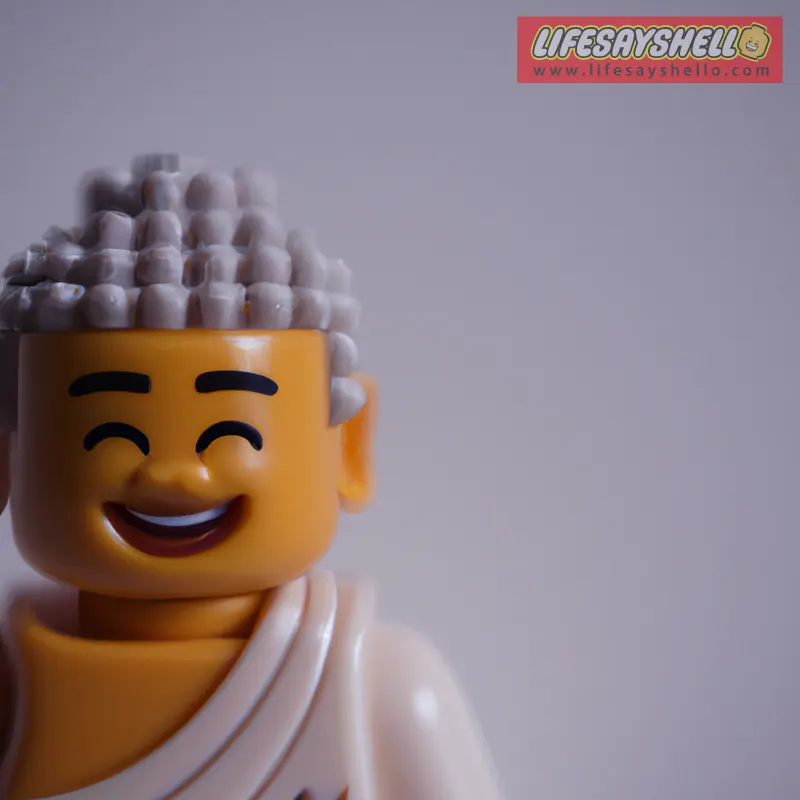Why Is He Called the Fat Buddha? Uncovering the History and Meaning Behind This Iconic Figure

The laughing Buddha with a large belly that you often see perched atop restaurant counters or nestled on yoga studio shelves has become a universal symbol of joy, abundance and good fortune. But what is the story behind this iconic figure? Why is he called the Fat Buddha when he looks so different from the original founder of Buddhism?
In this article, we’ll explore the history and cultural significance of the Fat Buddha statue, examine how he differs from Siddhartha Gautama, and why his image is such a prominent part of Chinese culture. Read on to uncover the meaning behind the merry monk known as Budai or Laughing Buddha.
Who is the Fat Buddha?
The Fat Buddha, also called Budai or Laughing Buddha, is a folkloric Chinese monk who lived around 900 CE during the late Tang Dynasty. Legend has it he was a Zen monk known as Qici, but was more commonly called Budai.
Budai means “cloth sack” referring to the bag he is always depicted carrying to hold his possessions. He likely was an eccentric Chan monk who lived in China spreading Mahayana Buddhist teachings to the people. Very little is known about the true historical facts of his life.
Instead, Budai is a legendary figure who represents happiness, abundance, and wisdom in Chinese culture. He is almost always shown as a smiling, pot-bellied, bald man wearing a simple robe. Other distinctive features are his large ears, jolly laugh, and the bag of blessings he carries.
Some key characteristics of the Fat Buddha include:
Big belly - His large protruding stomach represents good luck, prosperity, generosity, and forgiveness. It also symbolizes living life to the fullest.
Bald head - This is a common depiction in Buddhist art, representing the shaved heads of monks who have renounced worldly desires.
Laughing - Budai is often called the “Laughing Buddha” because of his cheerful and content demeanor. His smile reflects joy in the present moment.
Ears - His long ears symbolize wisdom and compassion as an attentive listener to the people’s prayers.
Robe - He wears the simple robe of a monk, representing a life of humility, poverty, and spiritual devotion.
Prayer beads - These represent his connection to the Buddhist faith as well as spirituality and meditation.
Bag of blessings - This bag is said to contain candy for children and spiritual treasures for the world. It represents abundance and a life of charitable giving.
So in essence, the Fat Buddha is a Chinese cultural icon of happiness, wealth, and enlightenment. His image serves as a reminder to be generous, find joy in the present, and live a life of compassion.
How is the Fat Buddha Different From the Original Buddha?
The Fat Buddha is commonly confused as being Siddhartha Gautama, the founder of Buddhism. However, they were two very different figures who lived about 1600 years apart.
Here are some key ways the legendary Fat Buddha differs from the original historical Buddha:
Lived in different eras - Siddhartha Gautama lived around 500 BCE in Lumbini, India. Budai lived in China around 900 CE.
Different appearances - The original Buddha was known for his ascetic appearance due to fasting and meditation. Budai is depicted as plump and smiling.
Founder vs folk hero - Siddhartha Gautama founded the Buddhist religion and its teachings. Budai was a legendary folk hero incorporated later into Chinese Buddhism.
Teachings - While both spread compassion and enlightenment, their approaches differed. Buddha emphasized self-discipline while Budai taught joyfulness.
Status - Buddha is the supreme figurehead and spiritual teacher in Buddhism. Budai is one of many bodhisattvas, or enlightened beings.
Purpose - Buddha’s purpose was to attain enlightenment and teach the path to nirvana. Budai represents living life fully and finding happiness within.
So in summary, the Fat Buddha is Budai, a Chinese folk hero from the 10th century. Siddhartha Gautama was an Indian prince who started Buddhism around 500 BCE. While both teach compassion, they have very different backgrounds, purposes, and historical accounts.
Why is the Fat Buddha Depicted as Obese?
Unlike the skinny ascetic Buddha, Budai is almost always depicted as plump, laughing, and carrying his sack of blessings. This is intentional symbolism, not a representation of how he actually looked. His fat belly and jolly nature represent:
Abundance - In Chinese culture, extra weight was associated with prosperity, wealth, and living life to the fullest. His fat stomach signifies abundance of food, luck, happiness, and wisdom.
Good fortune - Rubbing his belly is thought to bring good luck, fortune, and prosperity. His image conveys the ideal life of contentment and security.
Generosity - His bag of infinite blessings represents how generous he was in providing for others. He gives freely without expectation.
Forgiveness - The Fat Buddha’s joyful nature reflects inner peace and forgiveness. His laughter shows life’s obstacles can be overcome.
Living fully - His fat belly contradicts the skinny, ascetic Buddha who denied himself worldly pleasures. It reflects indulgence and finding joy in all of life’s experiences.
So the Fat Buddha’s rotund figure and cheerful demeanor are meant to symbolize a life of abundance, wisdom, generosity, inner peace, and contentment. He represents an enlightened being who has realized ultimate truth yet still enjoys worldly existence.
Why is the Fat Buddha Important in Chinese Culture?
The Laughing Buddha remains a prominent figure in Chinese culture because of what his image represents - happiness, wisdom, and enlightenment. Some reasons why he continues to be an important icon include:
Ideal lifestyle - In a culture that valued prosperity, Budai reflects the ideal Chinese lifestyle of health, wealth, and contentment.
Balance and moderation - His plump figure teaches the middle path between asceticism and overindulgence. He represents balance and moderation.
Joy and present-moment living - Budai’s constant laughter and smile are reminders to appreciate and find joy in the present rather than dwell on sorrow.
Generosity - His endless bag of blessings encourages charitable giving and sharing one’s good fortune with others.
Good luck and fortune - Rubbing his belly is thought to bring luck, prosperity, and abundance. He reflects confidence and security.
Peace - Budai’s peaceful, compassionate nature is a model for Mahayna Buddhism’s teachings of wisdom and enlightenment.
Humility - Despite his supernatural abilities, he lived humbly and reminded people to be humble, patient and focus on inner peace.
The Fat Buddha’s image provides a source of inspiration, humor, and comfort to many Asian cultures. He continues to remind people to find happiness and laugh even in the face of adversity. His legacy lives on as a symbol of joy, prosperity, and enlightenment.
Conclusion
The laughing, pot-bellied Buddha is more than just a charming statue - he is a meaningful figure with deep roots in Chinese history and culture. Next time you see his familiar image, you’ll know Budai was a real 10th century monk who became a folk hero symbolizing wisdom, generosity, and joy.
While often confused with the original Buddha, Budai has very different origins and purposes. His fat stomach and cheerful demeanor are meant to convey ideals of abundance, luck, enlightenment and living life to the fullest. The Fat Buddha continues to be an important icon that has spread beyond China to the rest of the world. His distinctive image serves as a reminder to find happiness and balance in life’s journey.
So the next time you need an uplifting reminder or a boost of luck, rub Budai’s belly and take a moment to smile. Let the Fat Buddha fill you with his infectious joy and remind you to make the most of each day. His legacy lives on as a timeless symbol of enlightenment, inner peace, and the abundant joy life has to offer.




Comments